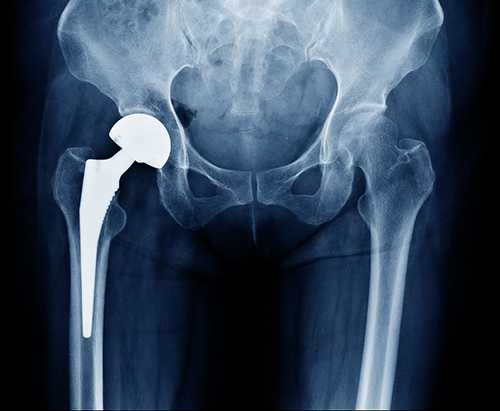Hip Replacement After a Fracture
The number of hip replacements after a fracture has dramatically increased as the U.S. population ages. Each year, over 300,000 people over 65 are hospitalized for hip fractures. More than 95% of hip fractures result from a fall. According to the CDC, women experience 3/4 of all hip fractures. With statistics like this, it is easy to see why falls are considered the number one cause of injuries, hospital admissions, and death for older Americans.
Historically, hip fractures left patients crippled or even caused death due to a lack of mobility and all its associated complications. Today, however, technical advances in prosthetics, materials, and techniques are revolutionizing hip replacement and making it one of the most successful orthopedic interventions of our generation.
Understanding Hip Fractures
The hip joint is a ball-and-socket joint where the “ball” or femoral head lives and moves within the pelvic socket. Typically, fracturing or breaking a hip refers to a break of the upper femur (thigh bone). If it occurs within the hip joint capsule, it is a “femoral neck fracture.” The femoral neck is structurally the weakest part of the femur. As a result, this is the most common type of break, especially in the elderly with osteoporosis. Poor balance, side effects from medication, and worsening eyesight often lead to falls that result in fractures in older adults.
Hip Replacement Surgery: partial vs total
A total hip replacement (THR) occurs when doctors replace the femoral head and socket. The new prosthetic femoral head (metal ball) then rotates within a plastic socket like a natural joint. If the fractured neck is significantly displaced or the person has arthritis (worn and compromised cartilage and bone), they are typically a good candidate for a total hip replacement vs a partial, which only replaces the femoral head. This scenario is especially true for older patients. THR produces the best and most consistent results because two prosthetic parts move against each other rather than a prosthetic head against natural cartilage. For young people who do not have underlying arthritis and have healthy acetabular cartilage, a partial replacement or internally fixing the bone with pins may be an option.

Hip Replacement Recovery
Complete recovery after a hip replacement can take at least 6 months. As with any serious operation, it is important to follow your surgeon’s recommendations and focus on rehab after surgery. Keep walking and doing physical therapy exercises. They help speed your recovery.
Got Medicare Questions?
We hope that this information on [focus keyphrase] is useful to you.
Let us help you answer your questions so that you can get back to the activities that you enjoy the most.
Call (888) 446-9157, click here to get an INSTANT QUOTE, or leave a comment below!
See our other websites:
This article was updated on updated on 11/11/2024.


